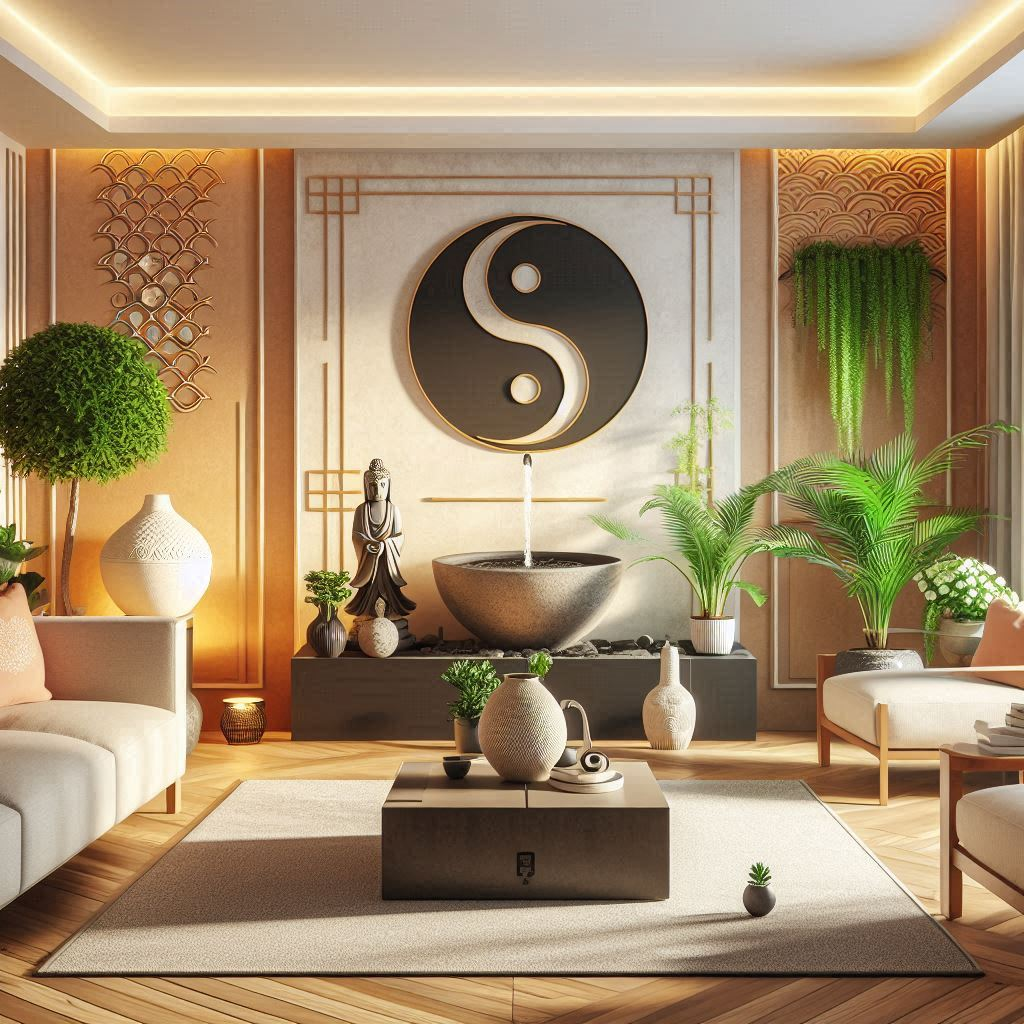
19.Unlock Harmony and Vitality: 4 Epic Feng Shui Principles for Interior Design Bliss
Feng Shui in Interior Design
Introduction:
Feng Shui, an ancient Chinese practice, is more than just arranging furniture or decorating with certain colors. It’s a philosophy that seeks to create harmony and balance in the environment by optimizing the flow of energy, or “chi.” In the realm of interior design, Feng Shui offers a holistic approach to creating living spaces that not only look beautiful but also support the well-being and happiness of those who inhabit them. In this post, we’ll explore the principles of Feng Shui and how you can incorporate them into your interior design to cultivate a sense of harmony and balance in your home.
Chapter 1: Understanding the Principles of Feng Shui
Feng Shui is based on the idea that the energy flow within a space, known as chi, can profoundly impact various aspects of our lives, including health, relationships, and prosperity. The practice encompasses a range of principles and guidelines for creating environments that support positive energy flow and promote balance and harmony. Key principles of Feng Shui include:
- The Five Elements: It recognizes five elements—wood, fire, earth, metal, and water—that are believed to influence energy flow in a space. Balancing these elements is essential for creating harmony and balance.
- Bagua Map: The Bagua Map is a fundamental tool that divides a space into nine areas, each representing different aspects of life, such as health, wealth, and relationships. By aligning the Bagua Map with the floor plan of a home, designers can identify areas that may need attention to enhance energy flow.
- Yin and Yang: This theme seeks to balance the opposing forces of yin (passive) and yang (active) energy within a space. Achieving a harmonious balance between yin and yang is crucial for promoting well-being and vitality.
Chapter 2: Applying Feng Shui Principles to Interior Design
Incorporating this theme into interior design involves a mindful approach to space planning, furniture arrangement, and decor choices. Here are some practical tips for applying Feng Shui principles to your home:
- Clear Clutter: Clutter disrupts the flow of chi and creates stagnant energy. Clear clutter regularly to promote a sense of spaciousness and flow in your home.
- Balance Elements: Incorporate the five elements of Shui—wood, fire, earth, metal, and water—into your decor to create a balanced and harmonious environment. For example, you can add plants for wood energy, candles for fire energy, and metal accents for metal energy.
- Enhance Natural Light: Natural light is essential for good Feng Shui. Maximize natural light in your home by using sheer curtains, mirrors, and reflective surfaces to bounce light around the space.
- Create a Commanding Position: Arrange furniture so that the main pieces, such as the bed or sofa, are in a commanding position facing the entryway. This promotes a sense of security and control.
- Incorporate Curved Lines: Incorporate curved lines and soft edges into your decor to promote the free flow of chi. Avoid sharp corners and harsh angles, which can create negative energy.
- Personalize with Intention: Decorate your home with items that have personal meaning and significance to you. Intentionally choose decor that aligns with your values, goals, and aspirations.
- Balance Yin and Yang: Create a balance of yin and yang energy in your home by incorporating both active (yang) and passive (yin) elements. For example, balance a vibrant, active living room with a calm, serene bedroom.
By applying these principles, you can create a home that not only looks beautiful but also feels harmonious and supportive of your well-being.
Chapter 3: The Benefits of Feng Shui in Interior Design
The benefits of incorporating this theme into your interior design extend beyond aesthetics. Here are some of the key benefits of embracing Feng Shui in your home:
- Promotes Health and Well-being: By optimizing the flow of chi and creating a harmonious environment, Feng Shui can promote physical health, emotional well-being, and mental clarity.
- Enhances Relationships: Feng Shui principles can improve relationships by fostering communication, understanding, and connection among family members and household occupants.
- Boosts Prosperity: A well-designed space that aligns with the principles can attract positive energy and abundance into your life, promoting prosperity and success.
- Creates a Sense of Harmony: tih stheme promotes harmony and balance in the home, creating a peaceful and supportive environment where you can relax, recharge, and thrive.
- Increases Productivity: By optimizing the energy flow in your home, Feng Shui can enhance productivity and focus, making it easier to accomplish tasks and achieve your goals.
By embracing the principles in your interior design, you can create a home that not only looks beautiful but also supports your health, happiness, and success.
Conclusion
In conclusion, it offers a holistic approach to interior design that goes beyond aesthetics to promote harmony, balance, and well-being in the home. By understanding and applying the principles, you can create a living space that supports your physical, emotional, and spiritual health while fostering positive energy flow and abundance in your life. Whether you’re renovating your existing home or designing a new space from scratch, consider incorporating Feng Shui into your interior design to create a home that not only looks beautiful but also feels harmonious and supportive of your lifestyle and goals.
For more information on Feng Shui, visit these websites:
4. External Link: Feng Shui – Wikipedia
6. International Feng Shui Guild
If you’re interested to learn more about this, check out this video: